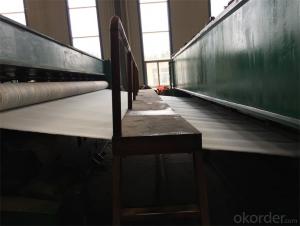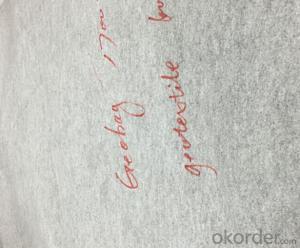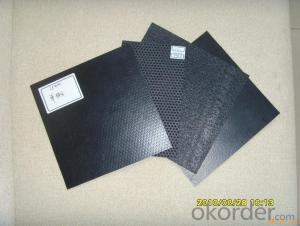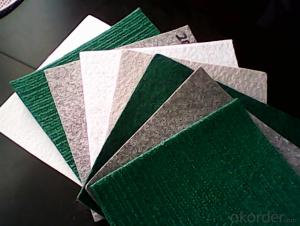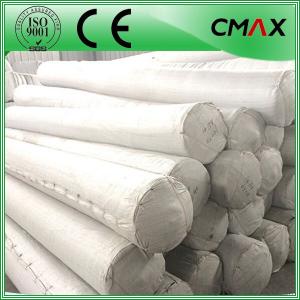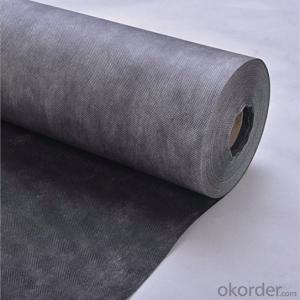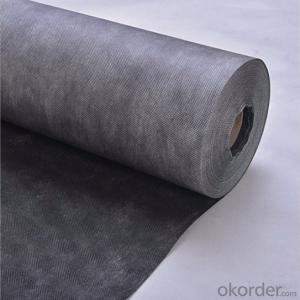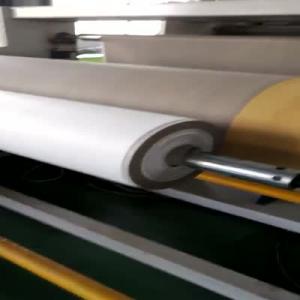PP/PET Needle Punched Non-Woven Geotextile/Non-Woven Geotextile
- Loading Port:
- Qingdao
- Payment Terms:
- TT or L/C
- Min Order Qty:
- 10000 m²
- Supply Capability:
- 100000 m²/month
OKorder Service Pledge
OKorder Financial Service
You Might Also Like
1. Non Woven Geotextile Specificatioin:
Properties | Unit | PET100 | PET150 | PET200 | PET250 | PET300 | PET350 | PET400 | PET450 | PET500 | PET600 | PET800 | |
Tensile Strength | MD | KN/m | 2.5 | 4.5 | 6.5 | 8 | 9.5 | 11 | 12.5 | 14 | 16 | 19 | 25 |
TD | KN/m | 2.5 | 4.5 | 6.5 | 8 | 9.5 | 11 | 12.5 | 14 | 16 | 19 | 25 | |
Tear Strength | MD | KN≥ | 0.08 | 0.12 | 0.16 | 0.2 | 0.24 | 0.28 | 0.33 | 0.38 | 0.42 | 0.46 | 0.6 |
TD | KN≥ | 0.08 | 0.12 | 0.16 | 0.2 | 0.24 | 0.28 | 0.33 | 0.38 | 0.42 | 0.46 | 0.6 | |
CBR Plunger Strength | KN≥ | 0.3 | 0.6 | 0.9 | 1.2 | 1.5 | 1.8 | 2.1 | 2.4 | 2.7 | 3.2 | 4 | |
Elongation at Yield | MD | % | 25-100 | ||||||||||
TD | % | 25-100 | |||||||||||
Hole Size | O90 | mm | 0.07-0.2 | ||||||||||
(O95) | |||||||||||||
Vertical Permeability | cm/s | k*(10-1~10-3),k=1.0~9.9 | |||||||||||
Identification Properties | |||||||||||||
Material | / | Polyester | |||||||||||
Color | / | White | |||||||||||
Thickness | mm, ≥ | 0.9 | 1.3 | 1.7 | 2.1 | 2.4 | 2.7 | 3.0 | 3.3 | 3.6 | 4.1 | 5.0 | |
Weight Unit Area | g/m² | 100 | 150 | 200 | 250 | 300 | 350 | 400 | 450 | 500 | 600 | 800 | |
Width | m | 1m-6m | |||||||||||
2. Non Woven Geotextile Introduction:
Nonwoven geotextiles are manufactured from the extrusion of polypropylene fibres which are then laid down on a manufacturing "bed" and then needle punched to entangle the fibres such that a dimensionally stable product is formed. Some additional thermal treatment is then applied to further improve the strength of the geotextile. Because of this manufacturing process non-woven geotextiles are generally best used in applications of drainage, filtration and protection
3. Non Woven Geotextile Features:
Wide-width rolls
Quality Certified
Proven for use in Main Roads works
Large range to suit the application
4. Non Woven Geotextile Application:
(1) artificial filling foundation movement of ground water.
(2) gravel filter layer surrounding the periphery of the drain pipe drain.
(3) in water conservancy projects wells, relief wells or inclined pipe filter.
(4) for retaining wall backfill reinforcement, or for anchored retaining wall panel.
(5) reinforced flexible pavements, crack repair roads, prevent the reflection cracks of pavement.
(6) in ternal vertical or horizontal drainage, dissipation of pore water pressure in soil.
(7) water impermeable geomembrane dam or embankment in the lower part of the back or the concrete.
(8) the isolation layer between the road ballast and subgrade, isolation layer or between the embankment and soft foundation.
(9) the isolation layer soil between highway, airport, railway ballast and artificial rockfill and soil fabric.
5. Non Woven Geotextile Product Show:
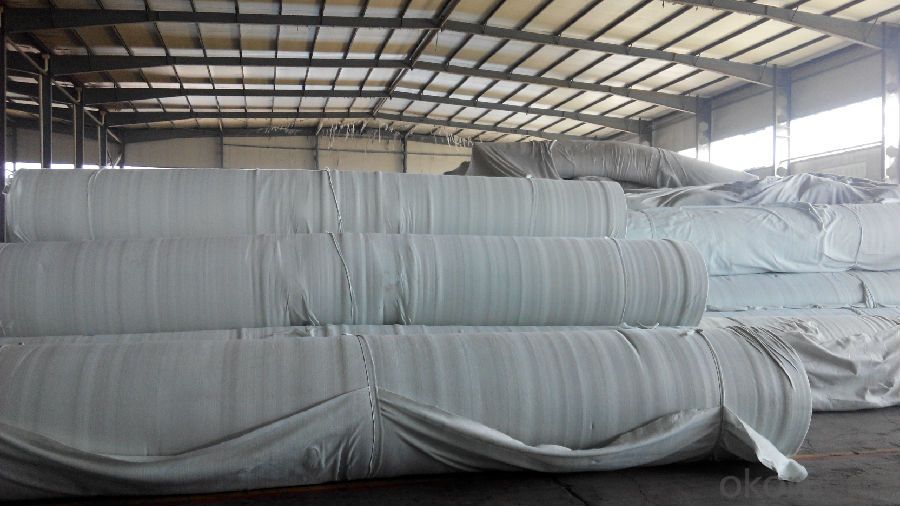
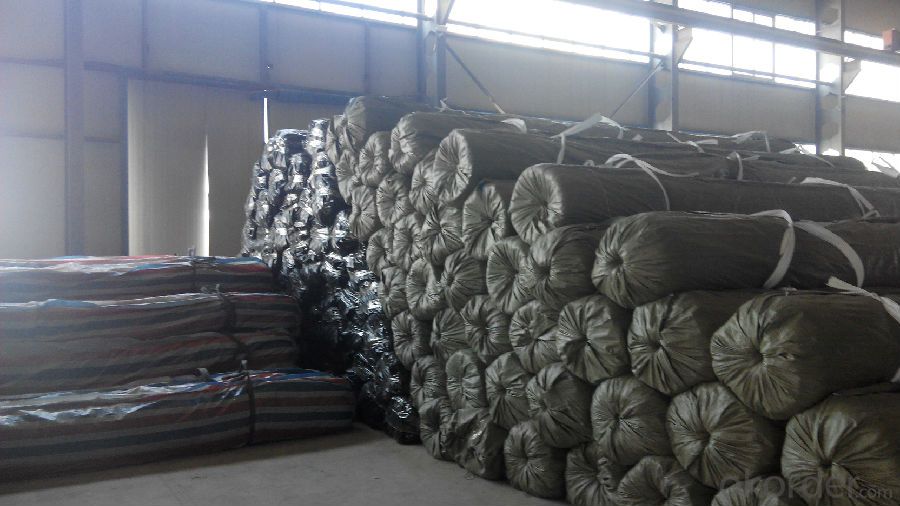
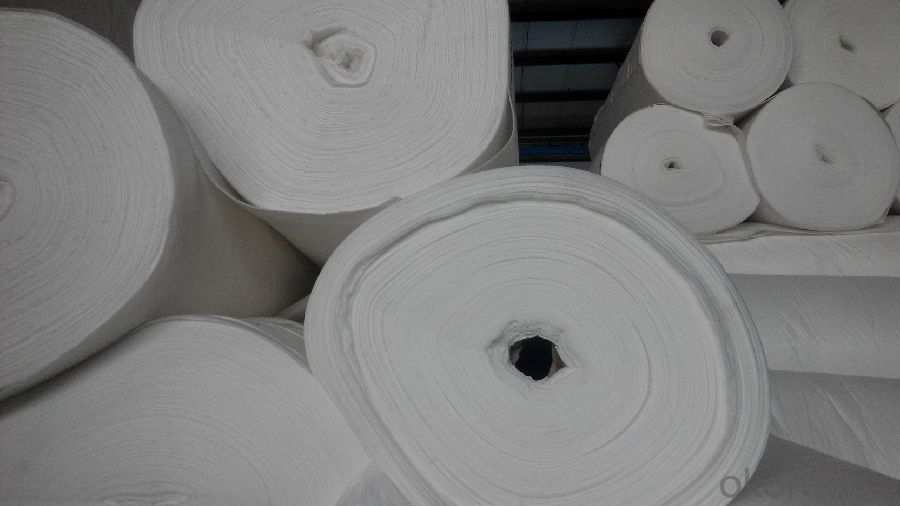
FAQ of our geotextile:
- Q: What can we do for the special customer?
A: Provide custom made service with customer's drawing; We make sure to provide you with the best solutions for your individual case. Whether standard items or non-standard items.
- Q: What can we supply?
A: We provide high levels of communication from start to finish.
- Q: What is our advantage?
A: Top Cemented Carbide has extensive business experience, Fast delivery and high quality.
Over the past decade a greater emphasis has been placed on the development and manufacturing of geosynthetic textiles. While the geosynthetics industry is comparatively new, it has already created products with applications in a wide range of industries including geotechnical, transportation, hydraulic, embankment management, and mining. In many cases, a single geosynthetic textile can solve or improve multiple civil engineering problems simultaneously.
The first example of a geosynthetic textile application is the use of a prefabricated pocket style vertical drain made from a nonwoven filter jacket specialized as a PVD filter material. The purpose of this product was to reduce the time needed for construction by quickly discharging water in the ground which speeds up the soil consolidation process. Overall, it proved to reduce construction time and speed up the consolidation of soft ground in a variety of different situations including road construction, the development of building sites, construction of gas and oil storage facilities, and bank revetment.
The second example of how geosynthetic textiles can provide solutions to civil engineering problems is the polyester woven geotextile mat. It is created from a high tenacity polyester filament which is highly dense. This particular geosynthetic textile has been used to reinforce soft ground and embankments, separate layers of sand and soft ground, prevent the uneven settlement of soft ground, and securing a safe path of travel for heavy equipment across soft ground.
- Q:What are the applications of geotextiles in coastal engineering?
- Geotextiles have various applications in coastal engineering, including erosion control, shoreline stabilization, and beach nourishment. They are commonly used to prevent soil erosion by acting as a barrier against wave action and currents. Geotextiles can also be employed in the construction of revetments, breakwaters, and groins to enhance coastal protection. Additionally, they facilitate beach nourishment projects by retaining sand and sediment, preventing their erosion and maintaining the shape and stability of beaches.
- Q:In ANSYS, geotextile what unit to simulate it?
- The use of shell units is relatively more reasonable.
- Q:Construction of composite geotextile
- Geotextile as a protective layer of geomembrane, so that the protection of impermeable layer from damage. In order to reduce the UV radiation, increase the anti-aging properties, it is best to use the laying method. Construction, the first use of smaller diameter sand or clay to find the base surface, and then laying geomembrane. Geomembrane should not be stretched too tight, buried at both ends of the soil part of the corrugated, and finally in the shop on the geomembrane with a fine sand or clay shop layer of 10cm or so excessive layer. Puzzle 20-30cm stone (or concrete prefabricated block) for the anti-Chong protective layer. Construction, should try to avoid the stones directly hit the geomembrane, the best side of the film side of the protective layer of the construction. Composite geomembrane and the surrounding structure should be connected with expansion bolts and steel plate pressure bar anchorage, the connection site to brush the emulsion asphalt (2mm thick) bonding, to prevent the occurrence of leakage.
- Q:Geotextile use
- Geotextile is a new type of building materials, raw materials are polyester, acrylic, nylon and other polymer polymer synthetic fiber. In accordance with the manufacturing method is divided into: there are two types of geotextile and non-woven geotextile. Geotextile with anti-seepage, anti-filtration, drainage, isolation, reinforcement, protection, sealing and other functions, it with the conventional masonry and concrete material seepage effect compared to a low investment, simple construction process, short duration Infiltration effect is good, the channel effective use of high coefficient. Water conservancy engineering dams and slope protection filter, channel isolation, seepage control; road, railway, airport runway foundation isolation, filter, drainage, slope, retaining wall and road reinforcement, drainage; , Geotextile has been widely used in the field of infrastructure construction, and has been gradually applied in the field of infrastructure construction, and the use of geotextile In a wider area.
- Q:Composite geotextile 20-500-0.5 what it means
- You should not write it right
- Q:How do geotextiles help with siltation control in construction sites?
- Geotextiles help with siltation control in construction sites by acting as a barrier to prevent soil erosion and sediment runoff. They are placed on the ground surface or as a lining in drainage channels, effectively filtering out sediment particles while allowing water to pass through. This reduces the amount of silt and sediment that enters nearby water bodies, helping to maintain water quality and prevent environmental damage.
- Q:How do geotextiles improve the performance of geocells?
- Geotextiles improve the performance of geocells by providing additional reinforcement and stability to the structure. They act as a barrier against soil erosion and help distribute loads evenly, increasing the overall strength and durability of the geocell system. Additionally, geotextiles prevent the mixing of different soil layers, enhancing filtration and drainage capabilities.
- Q:What is a polyester filament geotextile? Polyester filament geotextile
- In addition to a good mechanical energy, but also has a good vertical and horizontal drainage and good extension of energy and high resistance to biological, acid and alkali, anti-aging and other chemical stability. At the same time, also has a wide range of pore size, tortuous pore distribution, excellent permeability and filtration can be polyester filament geotextile purposes: water conservancy project dam and slope protection filter, channel isolation, seepage; Airport runway foundation isolation, filter, drainage, soil slope, retaining wall and road reinforcement, drainage; port engineering soft foundation treatment, beach embankment, harbor wharf and breakwater reinforcement, drainage; polyester filament geotextile Has been widely used in the field of infrastructure construction, and gradually applied to a wider range of areas. Polyester filament geotextile technical parameter table (GBT-1998): No. Remarks 1 unit area mass deviation% -6-6-6-5-5-5-5-5-4-4-42 thickness, mm ≥ 553 Width deviation% -054 breaking strength KNM ≥ vertical and horizontal 5 elongation at break% 40-806CBR breaking strength KN ≥ 707 equivalent aperture 090, mm007-02
- Q:Can geotextiles be used in underground storage tank installations?
- Yes, geotextiles can be used in underground storage tank installations. Geotextiles are commonly used as a protective barrier between the tank and the surrounding soil, providing filtration and separation functions. They can help prevent soil erosion, control groundwater flow, and provide additional stability to the tank system.
- Q:What are the durability considerations for geotextiles?
- Durability considerations for geotextiles include factors such as UV degradation, chemical resistance, mechanical strength, and resistance to punctures and abrasions. Geotextiles should be designed to withstand harsh environmental conditions and maintain their functionality over an extended period of time.
1. Manufacturer Overview |
|
|---|---|
| Location | Taian City,Shandong Province,China |
| Year Established | 2008 |
| Annual Output Value | Above US$100 Million |
| Main Markets | Africa, Oceania, North America, Western Europe, Eastern Asia |
| Company Certifications | ISO9001;IS014001 Certificate |
2. Manufacturer Certificates |
|
|---|---|
| a) Certification Name | |
| Range | |
| Reference | |
| Validity Period | |
3. Manufacturer Capability |
|
|---|---|
| a)Trade Capacity | |
| Nearest Port | Qingdao Port;Tianjing Port;Shanghai Port |
| Export Percentage | |
| No.of Employees in Trade Department | 21-30 People |
| Language Spoken: | English; Chinese; |
| b)Factory Information | |
| Factory Size: | 10,000-30,000 square meters |
| No. of Production Lines | Above 10 |
| Contract Manufacturing | Geotechnical Material (Geogrid,Fiberglass/Polyester Geogrid,Geocell,Geonet and Geomat,Plastic Safety Fence) |
| Product Price Range | Average |
Send your message to us
PP/PET Needle Punched Non-Woven Geotextile/Non-Woven Geotextile
- Loading Port:
- Qingdao
- Payment Terms:
- TT or L/C
- Min Order Qty:
- 10000 m²
- Supply Capability:
- 100000 m²/month
OKorder Service Pledge
OKorder Financial Service
Similar products
New products
Hot products
Hot Searches
Related keywords


